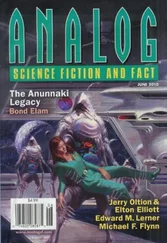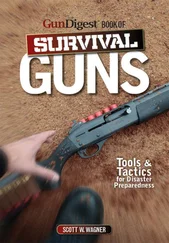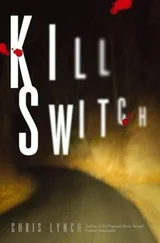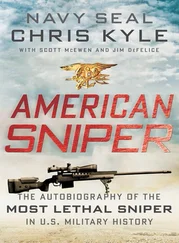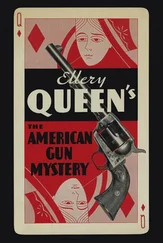As Ray worked to detach his parachute equipment, a German soldier blasted him in the stomach with a submachine gun. Figuring that Ray was dead, the German spun toward Russell and Steele, who were trapped and defenseless. As the Nazi took aim with his MP40, a dying Sergeant Ray pulled up his M1911A1, aimed it at the back of the German soldier’s head, and squeezed the trigger.
Bull’s-eye.
Ray died, leaving a young widow, but Russell and Steele survived the invasion of France. Ste.-Mère-Église, which commanded an important crossroad on the way to the Normandy beaches, was the first French town freed on D-Day.
But maybe the most amazing feat performed by an American with an M1911 during World War II occurred not on land, but over the skies of Burma.
In March 1943,Texas-born Owen J. Baggett’s B-24 heavy bomber was jumped by Japanese Zero fighters. The enemy’s 20mm cannons set the big plane on fire. As the B24 filled with smoke and incoming bullets, Baggett and four crew members bailed out. Japanese Zeros circled the chutes and strafed the helpless American aviators as target practice, killing several and wounding Baggett’s arm.
Between 4,000 and 5,000 feet, a Japanese pilot circled close to Baggett. The Zero’s canopy was open, maybe so the pilot could get a better view of the American before finishing him off. At first Baggett played dead. Then, with the Zero throttled back close to a stall, he pulled up his M1911 pistol and fired directly at the Japanese pilot’s head.
Baggett got off four shots before the Zero dove sharply away.
Probably wishing he had another shot, Baggett lost track of the plane as it disappeared below.
Baggett and another survivor were soon captured on the ground and sent to a POW camp near Singapore. Conditions were tough; the Texan’s weight plunged from 180 to 90 pounds in the two years he spent there. And yet Baggett realized he was being treated as kind of a celebrity by the Japanese. He was even given the rare opportunity to end his captivity by committing hara-kiri, or suicide.
With honors like that, who needs Red Cross packages? He declined.
One day in the camp, Baggett met an American colonel of the 311th Fighter Group who had also been shot down. They got to talking, and soon Baggett heard an incredible tale. Before he was captured, the Colonel had met a Japanese POW who told him that the Japanese aviator Owen Baggett shot at had crashed his plane. The pilot’s body was found with a bullet in the head.
The story of the GI who shot down a fighter plane with a handgun had apparently spread through the Japanese military. That may have explained why Baggett had gotten the VIP treatment—the guards were honored to be holding such a badass.
Did I mention he was from Texas?
The American POW colonel vowed to Baggett that he would write up a report, but he died in the camp. The tale was nearly lost to history, but in 1996, Air Force magazine recovered the story, reporting that “There appears to be no reasonable doubt that Owen Baggett performed a unique act of valor, unlikely to be repeated in the unfolding annals of air warfare.”
Five years after the end of World War II, an American tank commander from Nebraska found himself inside a M26 Pershing tank, surrounded by a force of five hundred North Koreans.
Master Sergeant Ernest R. Kouma and his lone tank were the only thing blocking the path of a massive enemy assault on American infantry positions along the Nakdong River. He held his ground all through the night, issuing orders to his crew and repulsing enemy charges with fire from the turret.
At one point, surrounded by enemy troops, Kouma jumped up into a hail of gunfire, grabbed the externally mounted .50-caliber M2 machine gun—designed by none other than John Browning—and sprayed the enemy at point-blank range.
When he ran out of .50-cal ammo, he methodically picked off enemy troops with his M1911A1 pistol, then doused them with grenades. Wounded, after the nine-hour battle Sergeant Kouma and his crew drove eight miles through what was now enemy territory to reach American lines. His tank wiped out three communist machine gun batteries on the road down. He is estimated to have killed two hundred and fifty North Korean soldiers—but in doing so, saved many more American lives.
Master Sergeant Kouma’s Congressional Medal of Honor citation says: “His magnificent stand allowed the infantry sufficient time to reestablish defensive positions. Rejoining his company, although suffering intensely from his wounds, he attempted to resupply his tank and return to the battle area. While being evacuated for medical treatment, his courage was again displayed when he requested to return to the front.”
The M1911 went on to serve in the Vietnam War and beyond. The king of the combat pistols was finally retired from many branches of the U.S. military in 1985, when the Pentagon designated the NATO 9mm M9 Beretta as the standard sidearm. I didn’t like the 9mm cartridge for combat, and I was far from alone. To this day, you hear a lot of complaints from fighting men about the lack of stopping power on their belts. Many special op warriors continue to use versions of the M1911, purchasing them out of their own pocket.
Back home in the States, the M1911 became the personal handgun of choice at federal law-enforcement agencies, including the FBI and Secret Service. While the official weapon was often another gun, many agents and officers chose the M1911 as their backup. It was also used by some state units like the Texas Rangers and the occasional local department. There’s a famous story back home about a Texas Ranger named Charlie Miller, who carried his M1911 ready to fire in his holster.
“Isn’t that dangerous?” asked a citizen one day.
“I wouldn’t carry the son of a bitch if it wasn’t dangerous,” said the lawman. You’ve got to love the Rangers.
In cases where the local department allowed them to supply their own service weapon—not unusual in Texas—the M1911 was one of the more popular choices. But for a long time, the majority of local departments regarded semiautomatic pistols as too much gun for the situations their officers routinely faced. And they didn’t have the money for it—not just to buy the guns, but to keep them up. The weapon required more care and attention than other revolvers, and the ammo wasn’t free. To many police chiefs, there was hardly any reason to look into something else. What they had was tried, true, and trusted. The main police gun during this long stretch was the .38 Special, or some variation of that classic wheelgun. It’s a weapon on our list—but first let’s look at something that made a lot more noise.
7
THE THOMPSON SUBMACHINE GUN

“The Thompson [is] the deadliest weapon, pound for pound, ever devised by man.”
—
Time , June 26, 1939
At 1:15 p.m. on September 20, 1926, the most powerful gangster in the United States sat with his back to the wall at his favorite restaurant on the first floor of the Hawthorne Hotel in Cicero, Illinois, just outside Chicago. He was about to have a sip of coffee when he heard a familiar, and very unwelcome sound: the tat-tat-tat of a Tommy gun blasting away outside.
Al Capone dove under the table. The sixty other patrons inside the restaurant shrieked and scattered. The waiters melted into the kitchen.
Frankie Rio, Capone’s bodyguard and personal hit man, rose, waving his gun. He scanned the windows to the street. The shooting had stopped. Nothing inside the restaurant was damaged, and no one there was hurt.
Читать дальше




